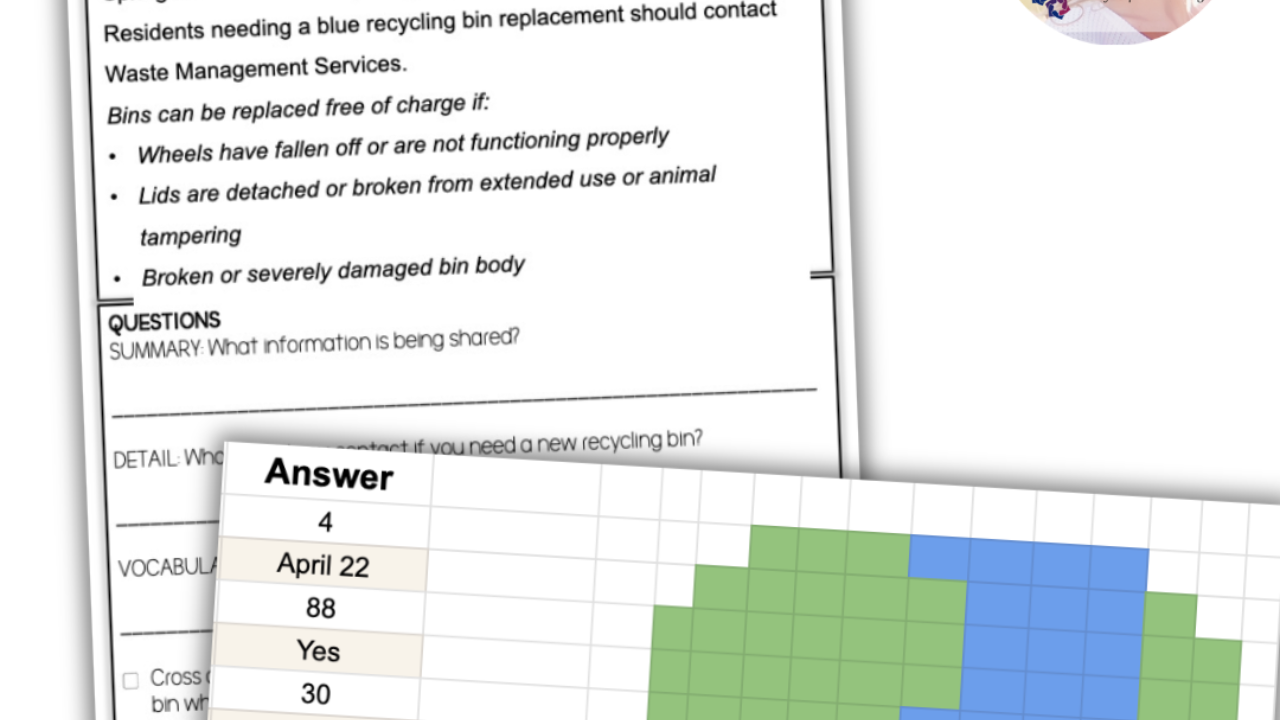Life Skill Rubrics and Checklists You Need
Aug 29, 2020
The Life Skills Rubric and Checklist bundle is a perfect answer to your ‘what can they do?’ question. I always seemed to be asking myself that question when I wrote out IEP Present Level of Performance or Functional Abilities and student's strengths before I created these life skill checklists and rubrics, now I have a more structured assessment process that is helpful in providing quality feedback and data for the IEP team and families.
I created the rubrics and checklists because...
It all started with the Cooking Rubric. The cooking rubric stemmed from the overwhelming number of data sheets I had to fill out while teaching my cooking class (you know, where knives and microwaves and can openers were constantly in use). I couldn’t handle all the different layouts and specific data requests (they barely fit on my teacher desk in my kitchen classroom), so I created my own! I found that I was able to gather just as valuable data and since each student’s data sheet looked the same I could fill them out quicker (since, you know, I was teaching simultaneously to gathering data).
This transferred to every other ‘life skill’ area I was teaching and was being taught in my program. I realize that in my effort to reduce paperwork I was creating paperwork, but I found value in analyzing each skill and pulling out each detail of those skills or steps.
I created the checklist and rubrics for...
These life skill rubric and checklist resources are ideal for any life skills or functional class, from junior high to high school or transition. The skills are applicable across both classroom and community settings. The data sheets are intended to be completed for a single student, but can be repeated for each student in a class to help inform scope and sequence of curriculum and goal setting.
The Purpose Of The Checklists and Rubrics is...
The Life Skills Rubric and Checklist bundle includes 10 data collection sheets, 2 rubrics, and 8 checklists. You can grab each rubric/checklist separately if you don’t need all 10.
The difference between the rubric and the checklist is the type of response. The rubric lists skills use a rating scale to show range of achievement, whereas the checklist lists skills and whether they are observed in a yes/no format.

Rubric and Checklist Quick Descriptions
-For assessing an individual's level of independence when they are accessing their community. The rubric creates a spectrum of independence in different skill areas including safety, communication, behavior, interactions, task completion, and more.
-For assessing an individual’s ability to prepare, cook, and eat their own meals (sack, microwave, or oven) using a recipe (visual or text) or box directions. Skills include washing hands, setting the table, cutting/measuring, cooking, clean-up, and more!
-For assessing an individual’s ability to prepare and eat a sack or microwave lunch, especially those who need assistance with eating. Skills include preparing to cook, cooking, following recipe directions, eating, safety, clean-up, and more!
-For families or caregivers to complete and assess their student’s level of independence and task responsibility in their home setting. Skills include picking out clothes, preparing meals, doing laundry, cleaning (all home areas), packing, ordering at restaurants, and more!
-For assessing an individual’s monitoring, managing, counting, and paying with money, both cash (dollars and coins) and plastic (debit card). The areas include a variety of skills within carrying, counting, paying, and budgeting (spending control) for money management.
-For assessing an individual’s recreation and leisure skills. The recreation and leisure areas include preferred activities, execution of activities, types of activities, with a variety of skills within each.
-For assessing an individual’s ability to remain safe. The safety awareness spans 3 environments- home (kitchen/food, bathroom, digital, animals/pets, elopement risk), school (classroom, hallway, common spaces, work/volunteer sites, peers/staff), and community (transportation, safe strangers, unsafe strangers, large crowds, public spaces).
-For assessing an individual’s ability to maintain personal hygiene through completing self-care tasks. Skill areas include toileting, shower/bathing, washing hands/face, brushing teeth, dressing/undressing, nail and hair care, shaving, and medication.
-For assessing an individual’s ability to manage their time and schedule. Areas include understanding time, keeping time, and managing time, with a variety of skills within each.
-For assessing an individual’s ability to perform vocation-related tasks (with a strong emphasis on soft skills), either volunteer or competitive. Skill areas include professionalism, behavior, navigating an environment, safety, communication/interaction, problem-solving, task completion, flexibility, and awareness of customers.
I designed the rubrics and checklists this way...
-
At-A-Glance- I was set on keeping as many rubrics and checklists to one page as possible. This makes finding strengths/weaknesses quick and easy.
-
Clipboard Friendly- I also created the format so that it could fit on a clipboard, as that is the main way I collect data in both the classroom and community. Since the clipboard makes the top 1” of any paper unreadable I needed all the important information at the bottom (like student name, date, etc).
-
Use Separately or Together- The ten checklists and rubrics can be used together to provide a well-rounded image of a student or can be used separately to describe the ability level of a specific skill.
How The Rubrics and Checklists Can Being Used
- Defensible, objective data for IEP goals and paperwork
- Data to justify increased/decreased paraprofessional/job coach support
- Data for discussions around Least Restrictive Environment
- Data to inform instruction
- Data to inform IEP transition plans
- Evidence to encourage parents to transfer skills from school to home setting
- Evidence for change of placement/class
- Data for appropriateness for post-secondary placements
- Baseline for determining new student/class skills and abilities
- Data to show student progress in specific skills
I hope you find these life skill rubrics and checklists as a valuable assessment tool for your classroom as they have been for mine!
















